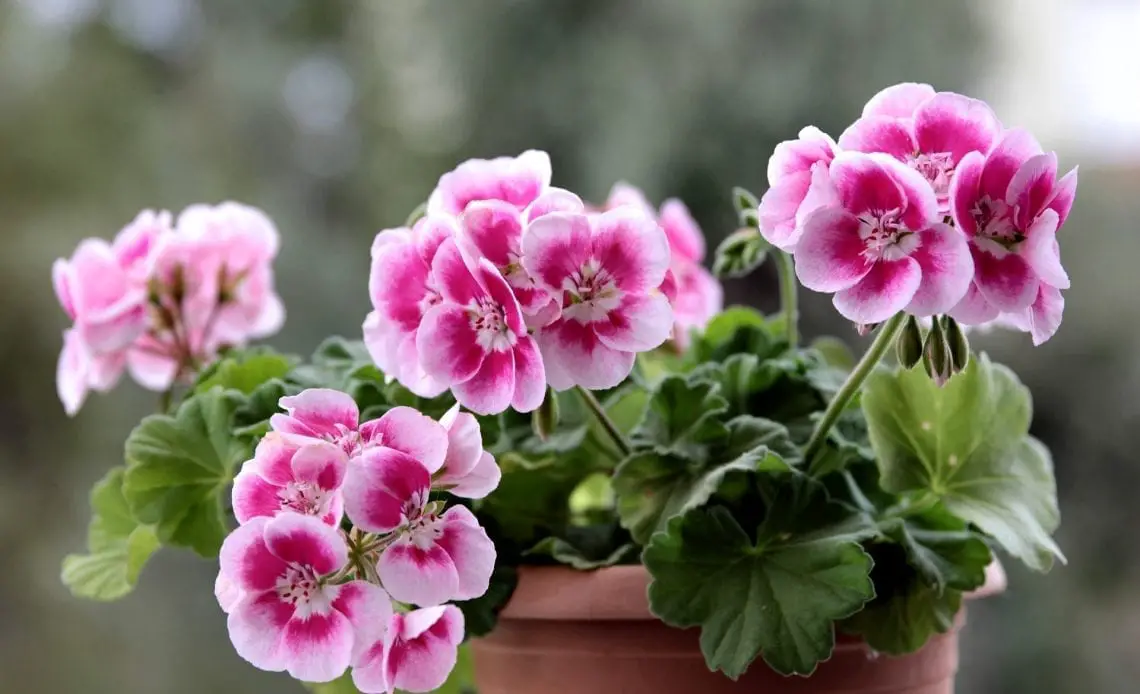
Last updated on May 20th, 2023 at 11:22 pm
Geranium (Family: Geraniaceae) is a genus of more than 400 herbaceous species. Some geranium species are wood at the base, and others have tubers. They are spread from Eurasia to the Americas and can also be found in New Zealand, Africa, Australia, New Guinea, and other islands.
Geraniums have basal leaves and flowering stems that carry smaller leaves. Depending on the species, the height of the geranium plant can range between 30 and 180 cm.
The flowers are saucer-shaped and radially symmetrical. They can be pink, white, purple, or bluish. The plants continuously divide the rhizomes below or at the soil surface level (a property known as clonality).
The word geranium comes from the Greek word γέρανος (géranos) for ‘crane’ due to the resemblance of the plant’s fruit to the beak of a crane bird. The most popular common name of the geranium flower is cranesbill.
What does the Geranium flower symbolize?
From Islamic to Christian to Scandinavian traditions, geraniums occur frequently. The geranium flower symbolism is associated with gods, saints, and many desirable attributes. The geranium flower symbolizes prosperity in Egypt, longevity in Japan, and immortality in China.
In the language of flowers, the true geranium is rich in flower symbolism. They have attributed the powers of love, peace, healing, elegance, and spirituality. They mostly have desirable symbolizing meanings, including fertility, health, joy, protection, frustrations passing away, and true friendship.
The geranium flower is a component of many magical spells. The root of the geranium was worn around the neck for protection. Geranium tea was consumed as a love potion. Brushing leaves of rose geraniums onto windows and door knobs secured the house against intrusion.
However, certain geraniums can symbolize envy, deceit, and folly in certain situations and contexts. Most of these negative connotations were attributed to the geranium throughout the Victorian era.
Because the geranium flowers have a simple and light appearance, they symbolize foolishness and stupidity. The real reason was the strong class dimension of gardening at that time.
Growing potted geranium flowers (especially on the terrace) was labeled as ‘horticultural bourgeoisie’ and a sign of ‘crudeness and thoughtlessness of taste.’ Geranium became a symbol of industrial mass culture.
All in all, the geranium flower symbolic meanings are:
- happiness
- good health
- good wishes
- friendship
- protection
Meaning of the Geranium flower colors
Pink color
Pink geraniums are flowers of romance and gentle love. They also symbolize femininity and motherly aspects of love.
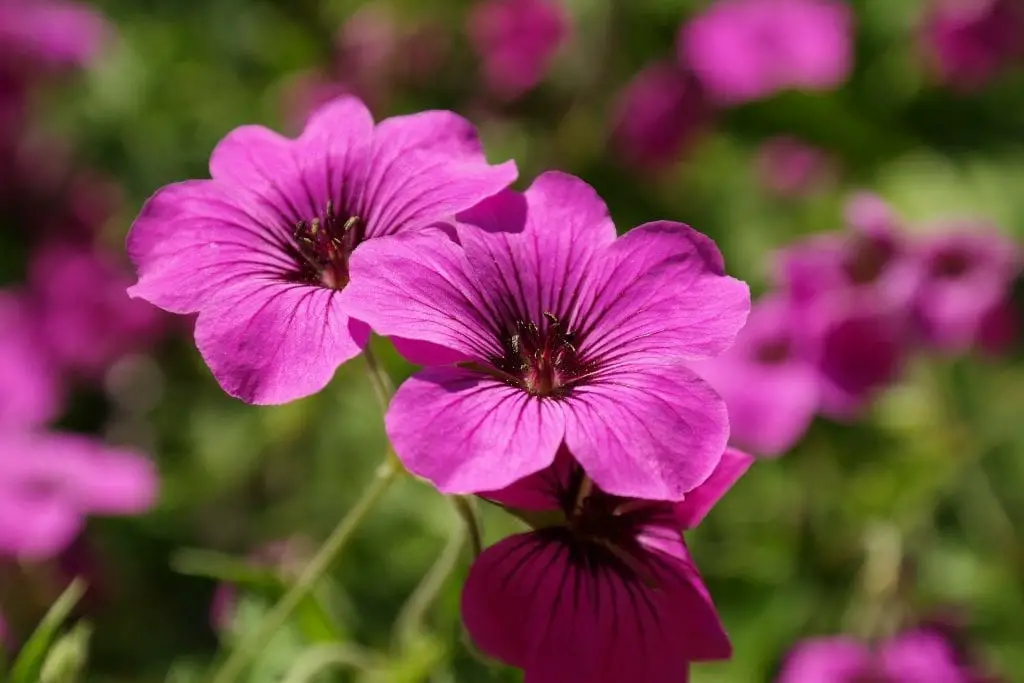
White color
According to a traditional belief, white geranium is a powerful protection plant. It is said that snakes and flies would never go near white geraniums.
White geraniums symbolize innocence, purity, and celebrations. They also promote fertility.
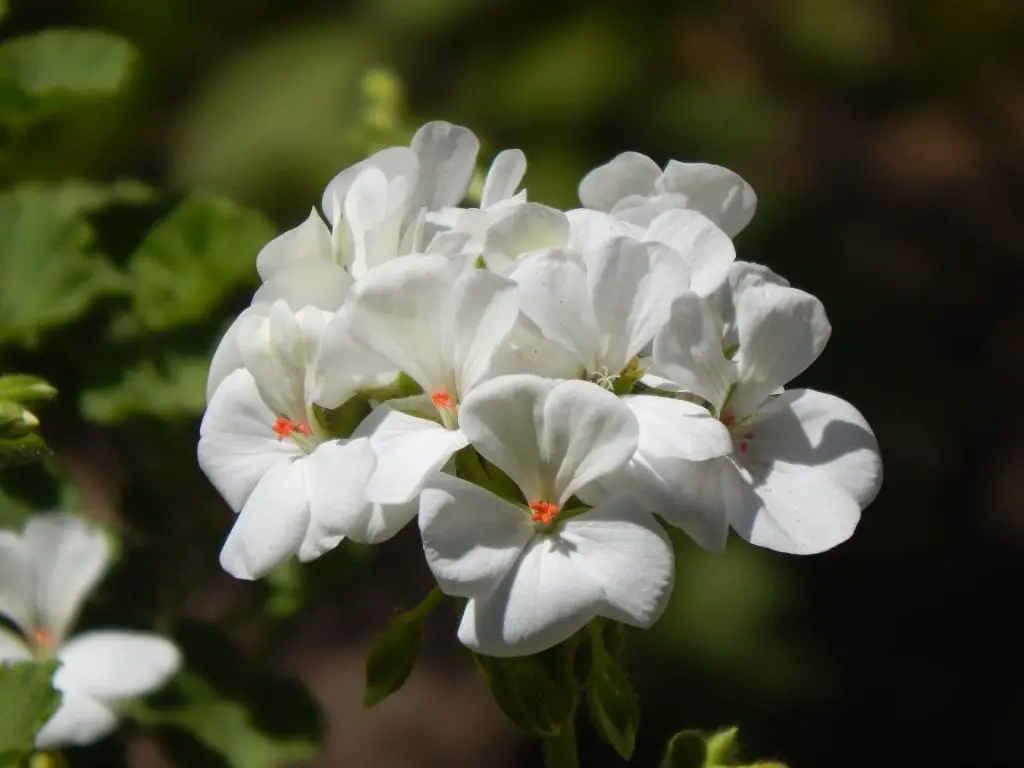
Violet or Bluish-Purple color
The purple geranium flower is a symbol of sophistication, nobility and style. This flower conveys messages of admiration and adoration towards someone.
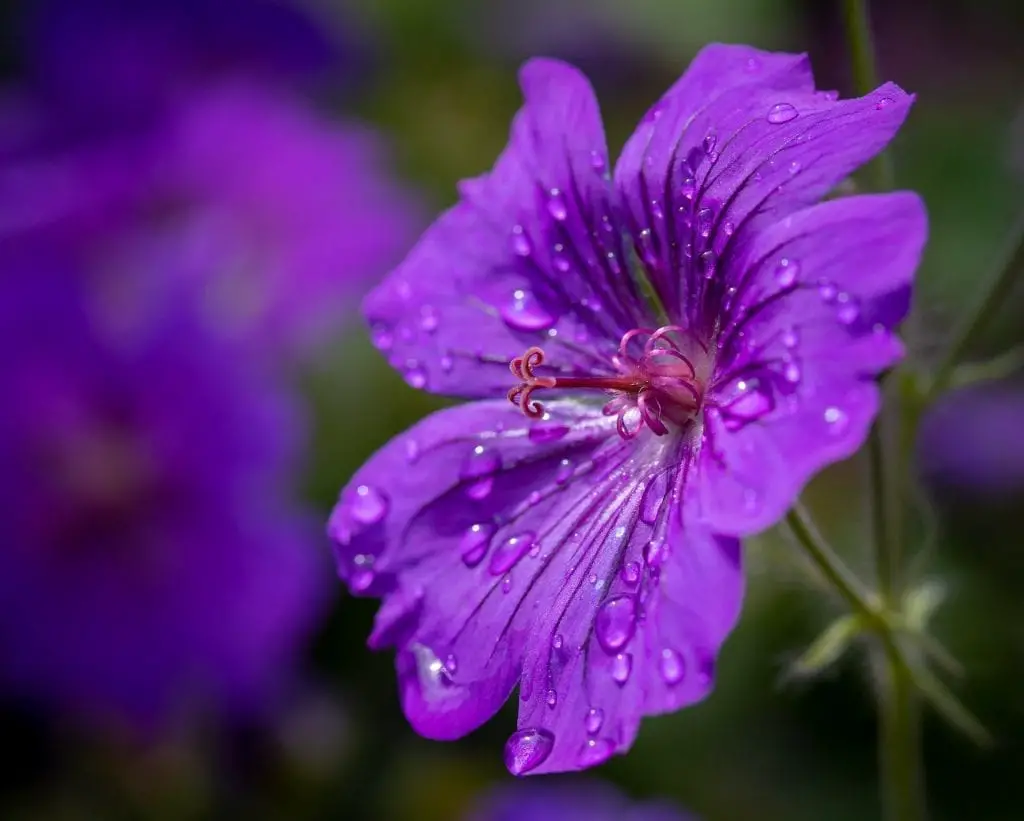
Red color
Contrary to the common belief, red geranium flowers are not real geraniums. The red-flowered species is a pelargonium. The most common red cultivar is Pelargonium x hortorum. In the Wiccan belief system, red geraniums, when planted near the doorway, can ward off illness and ‘sense’ the presence of strangers.
Most commonly, red geraniums represent feelings of love, passion, and romantic attachment.
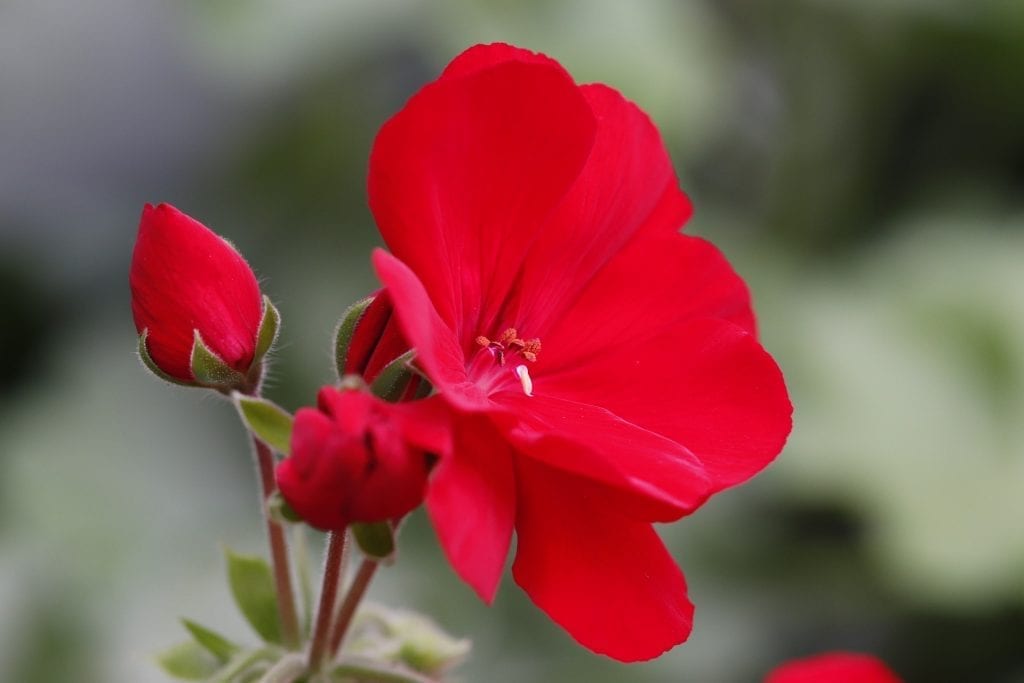
Interesting facts about the Geranium flowers
- Geranium oil is found in cosmetics and skincare.
- Anxiety and depression are treated with geranium oil.
- It is also used to cure infections and ease pain due to its anti-inflammatory, antibacterial, and antioxidant effects.
- The flowers and foliage of fragrant geraniums are edible and can be used to flavor and fragrance dishes or salads.
- South African indigenous peoples use geranium roots to cure respiratory illnesses.
- Mosquitoes are said to be repelled by citrus or lemon-scented geraniums.
How to grow Geranium flowers
Geraniums are popular garden bedding plants but can also be planted indoors or outside in hanging baskets. Growing geranium plants is simple if you are aware of what they need.
- Place the geraniums in pots with drainage holes to avoid root rot.
- When planting in containers, use a well-draining potting mixture and not heavy, clayey soil.
- Place the plants where they will get 4-6 hours of sunlight for maximum bloom.
- Water once the soil begins to feel dry indoors or at least weekly outdoors.
- Use a water-soluble houseplant fertilizer with additional organic matter every four to six weeks throughout their active growing season.
How to care for Geranium flowers
- Allow the soil of the geraniums to dry to some extent between waterings, then water thoroughly.
- Water much less during the winter, but do not let the roots dry out entirely.
- Deadhead the spent flowers regularly to encourage blooming.
- Pinch back the stems to promote bushiness and curtail legginess.
- Fertilize every 2 weeks or so during active growing months. Use a water-soluble fertilizer at half-strength.
- Re-potted the plant in spring to encourage new growth or if they need to be refreshed.
Best time to gift Geranium flowers
Geraniums are mostly associated with happiness, health, and friendliness. This symbolism has made them a common housewarming gift. One can rarely go wrong when gifting geranium flowers.
However, geraniums of a particular color can make a stronger impact when gifted at an appropriate occasion. For example, white geraniums are a perfect wedding gift for a bride, while red geranium flowers can be gifted to a romantic partner as a statement of passion and love. Gifting violet geraniums is an appropriate way to express respect and admiration towards a senior person, a role model, or somebody of a higher social status, while pink geraniums are a perfect gift for a woman of any age as a more subtle expression of kindness and appreciation. Potted geranium flowers continue to be popular window plants.
In June 2020, Tony Louki, the Mayor of Hounslow, UK, launched a campaign called ‘Gift a Geranium.’ The campaign invited the local community to give geranium flowers to a nearby care home to express gratitude for their service during the Covid-19 pandemic.
Conclusion
The geranium flower is an excellent home addition and gift in various settings. They also make a lovely gift for the gardener in your life because they will bring joy all summer.
While the popularity of these flowers declined during the Victorian era, it has risen since then.
If you want to know and learn more about flowers, we at PansyMaiden can help you. Check out our fun, easy-to-read, and informative flower-related content that you will surely enjoy!
